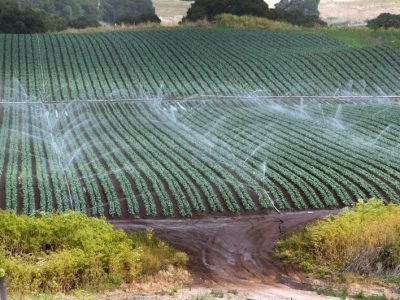California
Suing Big Oil
Which court has jurisdiction? State court or federal?
Yesterday, the Ninth Circuit ruled in favor of the plaintiffs in two climate change cases brought against the oil industry. The court ruled on a narrow but important procedural issue: whether the cases should be sent back to state court. Cities and counties should now be able to continue with the cases, in which they …
Continue reading “Suing Big Oil”
CONTINUE READINGNinth Circuit Hands California Local Governments Big Climate Change Win
Local Governments’ Climate Change Lawsuits Against Big Energy Belong in State Courts, Court of Appeals Rules
Today the U.S. Court of Appeals for the Ninth Circuit handed numerous California local governments a major win over major oil, gas and coal companies in several of the nation’s most consequential set of climate change lawsuits. The Ninth Circuit did so in two separate opinions; County of San Mateo v. Chevron Corporation and City of …
Continue reading “Ninth Circuit Hands California Local Governments Big Climate Change Win”
CONTINUE READINGGuest Contributors Helen Kang and Deborah Sivas: California Should Lead the Nation in Controlling Agricultural Pollution
Protection of Drinking Water and Environmental Quality Demands Strong Action
Agricultural runoff is one of the largest sources of pollution in the nation’s waterways. In recent years, scientific journals and the media have been filled with reports of toxic algae blooms and dead zones near and far: The Everglades, Great Lakes, Gulf of Mexico, Chesapeake Bay, and San Francisco Bay-Delta. Agricultural pollution also threatens public …
CONTINUE READINGWhat Are The Benefits Of Phasing Out California’s Oil & Gas Production?
Emissions should decrease but multiple factors complicate any predictions
It might seem obvious that phasing out oil and gas production in California would benefit the climate. But the reality is much more complicated, in terms of emissions, economics and even geopolitics. CLEE just released the report Legal Grounds with policy options to reduce in-state production, but the question of how much a phase out …
Continue reading “What Are The Benefits Of Phasing Out California’s Oil & Gas Production?”
CONTINUE READINGDo Epidemic-Based Business Closures by Government Trigger an Unconstitutional “Taking”?
Longstanding U.S. Supreme Court Precedents Indicate the Answer is an Unequivocal “No”
Lately, an increasing number of public and private voices have been raised in opposition to business closures ordered by state and local governments in response to the COVID-19 epidemic. In many such cases, that opposition has taken the form of lawsuits filed by business owners, claiming a violation of their constitutional rights. Gun shops across …
CONTINUE READINGTop 10 Worst Environmental Decisions in California’s History
Ranking the lost landscapes and environmental features
California has a paradoxical history with its environment. On one hand, the state boasts incredible natural beauty, along with a government that is an internationally recognized leader for strong environmental policies. But the state’s residents have also caused severe environmental destruction, particularly in the late nineteenth century — some of which helped spur the mobilization …
Continue reading “Top 10 Worst Environmental Decisions in California’s History”
CONTINUE READINGCoastal Beaches, Public Access & the Pandemic
Important Legal & Policy Considerations in Closing Beaches to Protect Public Health
As part of America’s steadily growing restiveness over state and local shelter-in-place directives, the issue of government-mandated public beach closures has recently emerged as a particularly contentious issue. It’s especially prominent now, given that many coastal states are experiencing their first heat waves of 2020. Many Americans are increasingly weary of and angry over public …
Continue reading “Coastal Beaches, Public Access & the Pandemic”
CONTINUE READINGRoadmap For California To Phase Out Oil & Gas Production
New CLEE report released today with legal options for state policy makers & free May 12th webinar
California is the seventh-largest oil producing state in the country, with a fossil fuel industry that is responsible for billions of dollars in state and local revenue and other economic activity each year. Yet continued oil and gas production contrasts with the state’s aggressive climate mitigation policies, while creating significant air and water pollution, particularly …
Continue reading “Roadmap For California To Phase Out Oil & Gas Production”
CONTINUE READINGIn Support of Public Health Federalism
Reactionary State Responses to COVID-19 (and Other Threats to Public Health) Don’t Mean Federalism Is For Suckers
For decades, “states’ rights” has been a rallying cry of the right wing. Most Americans are familiar with the dynamics that required the federalization of civil rights law, both in the 1860s and again in the 1960s, the protection of much of our nation’s federal lands, and the national crises that necessitated the federal government …
Continue reading “In Support of Public Health Federalism”
CONTINUE READINGEarth Day’s 50th Anniversary: A Reflection
Why Celebrating Environmental Values & Goals Is Now More Important Than Ever
Today marks the 50th anniversary of America’s first Earth Day. Beginning on April 22, 1970, the United States and global community have rallied each year to celebrate environmental values and goals. It seems especially important to commemorate and continue that tradition in the midst of the current coronavirus pandemic. The first Earth Day was a …
Continue reading “Earth Day’s 50th Anniversary: A Reflection”
CONTINUE READING












